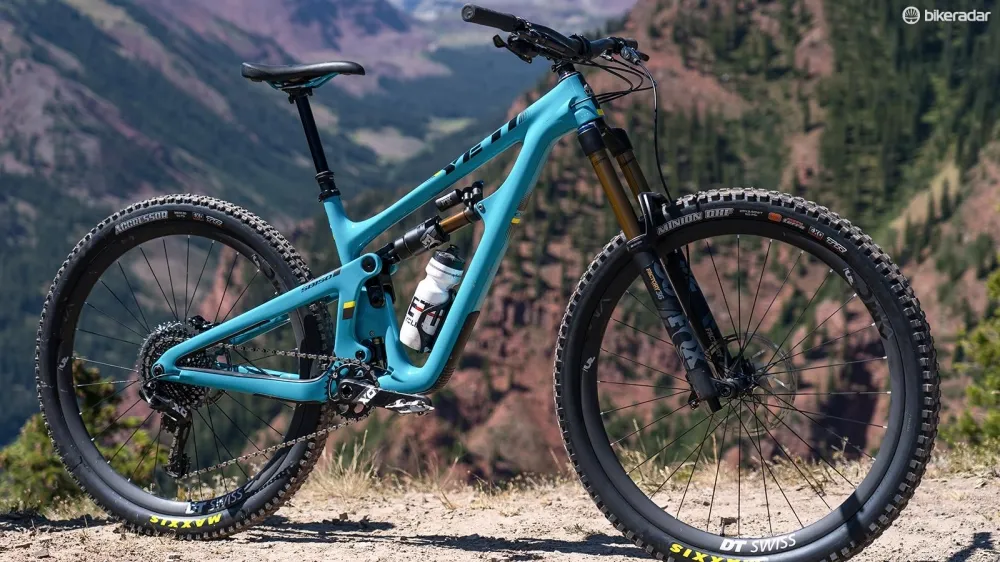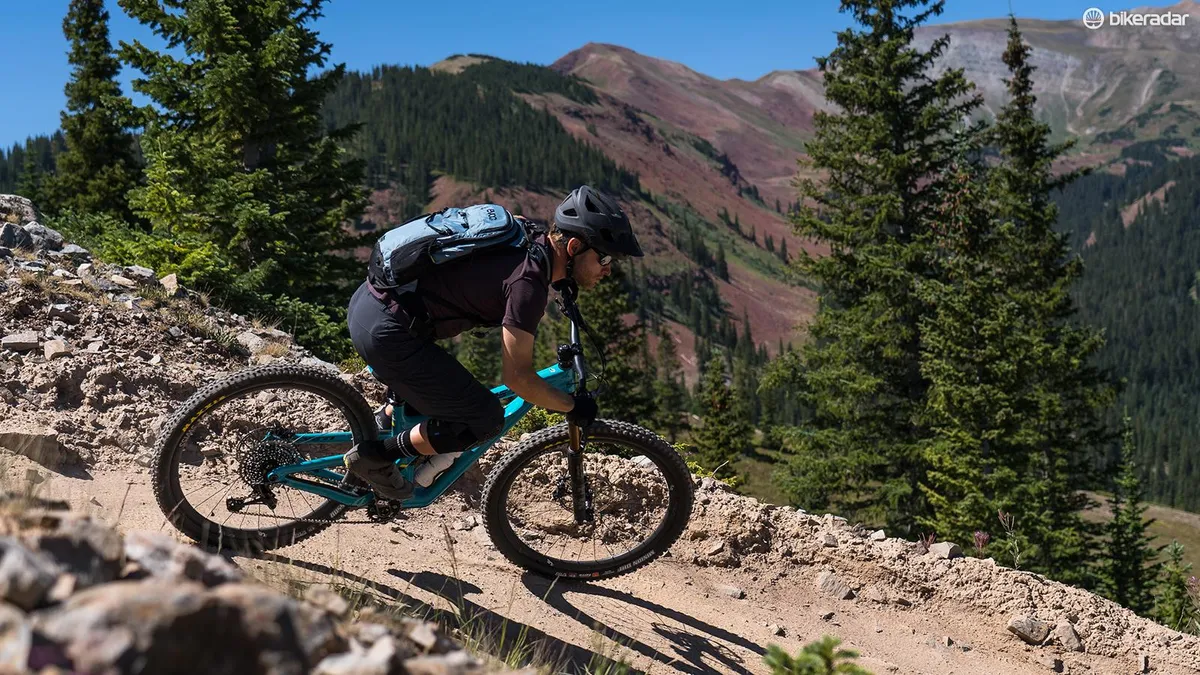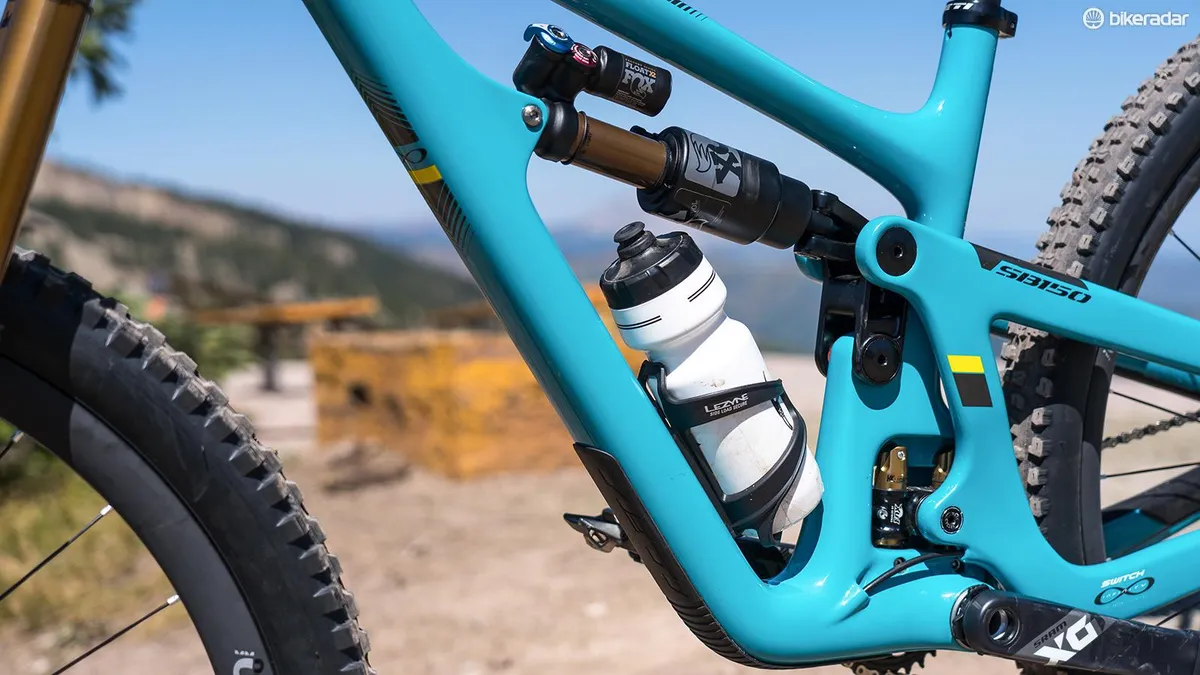Yeti recently took the covers off its new enduro-ready 29er. The SB150 builds on the success of the SB5.5 with small to extra-large sizing, longer, slacker geometry and rear suspension that serves up 10mm more travel in a more progressive package.
One of the new breed
The SB150 shares the same design aesthetic as the rowdy yet race-worthy SB100 Yeti introduced this spring and, yes, that includes space in the front triangle for a water bottle.
Yeti’s development team used a heavily modified SB5.5 as a mule to test geometry concepts and prove the design of the SB150.
“We explored the longer, lower, slacker trend and learned that it’s a package deal. You need a longer front center, steeper seat tube angle as well as a slacker head angle with less offset to make everything work together,” said Peter “Stretch” Zawistowski, Yeti’s director of engineering.
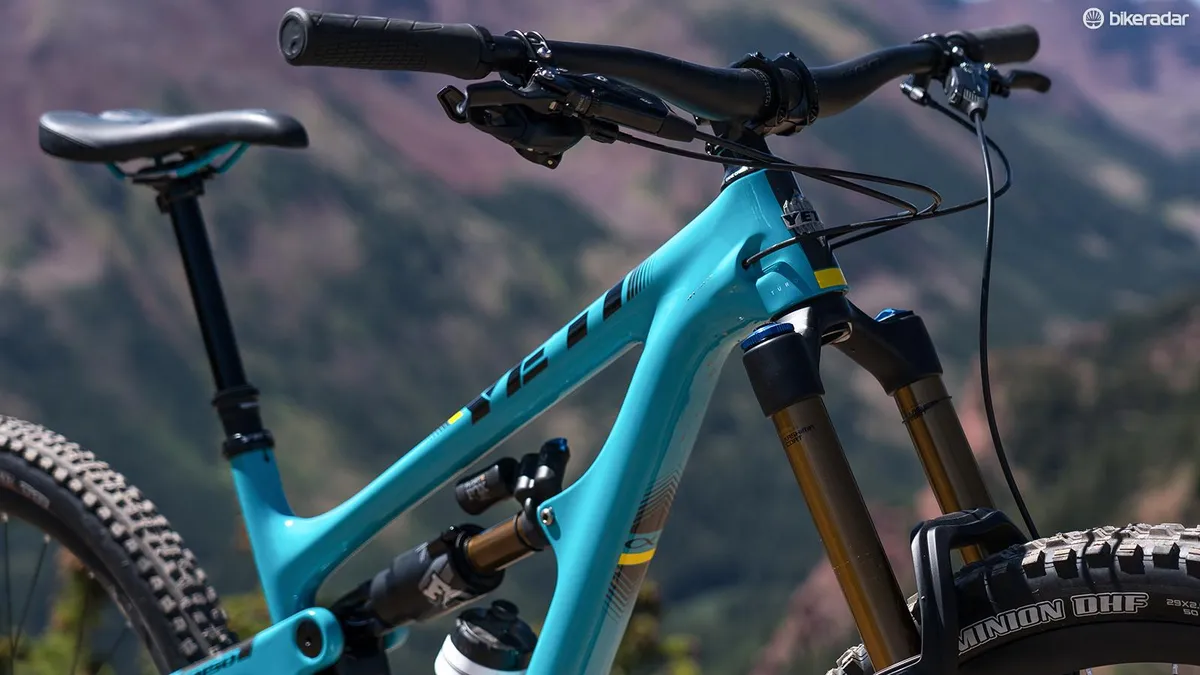
Reach numbers across the four-bike size range are approximately 40mm longer than the SB5.5. The head angle has been reduced to 64.5-degrees and the stock 170mm Fox 36 fork uses the bang-on-trend, shorter 44mm offset.
To ensure this bigger bike can still climb, the seat tube angle was steepened to 77-degrees.
Subtle changes include a shorter 31.6mm seat tube to allow riders to run longer-stroke dropper seat posts and tube-in-tube routing through the front and rear triangles.
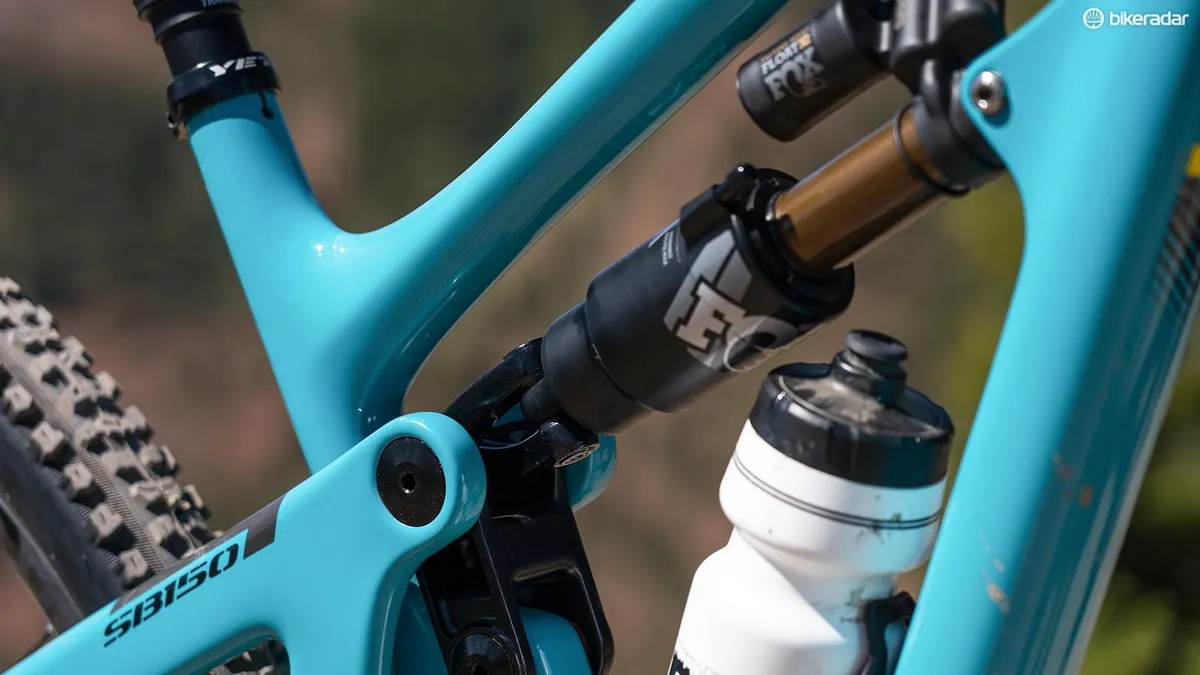
In addition to the bump in travel from 140 to 150mm, Zawistowski notes that Yeti refined the leverage of the company’s Switch Infinity suspension system to make the rear suspension more sensitive early in its travel and 15-percent more progressive toward the end of the stroke, allowing the SB150 to be a better match with coil shocks.
The SB150 also sports a shock extender that juts forward from the upper link. This 60mm extender positions the shock further forward in the front triangle, freeing up space for a water bottle and reducing stand-over clearance. The extender uses a hinged, two-piece design that allows the shock to be installed or removed without disassembling the entire upper linkage — a feature that Yeti team mechanic Shaun Hughes appreciates when experimenting with race-day suspension tunes for Richie Rude.
Colorado tested
I logged two days riding an SB5.5 prior to the SB150 media camp. This gave me good baseline on which to base my impressions of its successor. Since the launch, I’ve spent a month getting better acquainted with the SB150 on my rocky Front Range trails.
I was expecting the new kid on the block, with its longer, slacker geometry to outpace the 5.5 on descents, which it does.
At speed and on the right trails, the SB150 is a force to be reckoned with. There are many bikes — most with smaller, 27.5in wheels — that are better choices for knocking out laps in groomed bike parks; there are few that are as adept at tackling steep terrain littered with boulders and strewn with roots.
Riders unaccustomed to the new school of mountain bike geometry will immediately feel a boost in confidence from having so much more bike in front of them as they plunge downward.
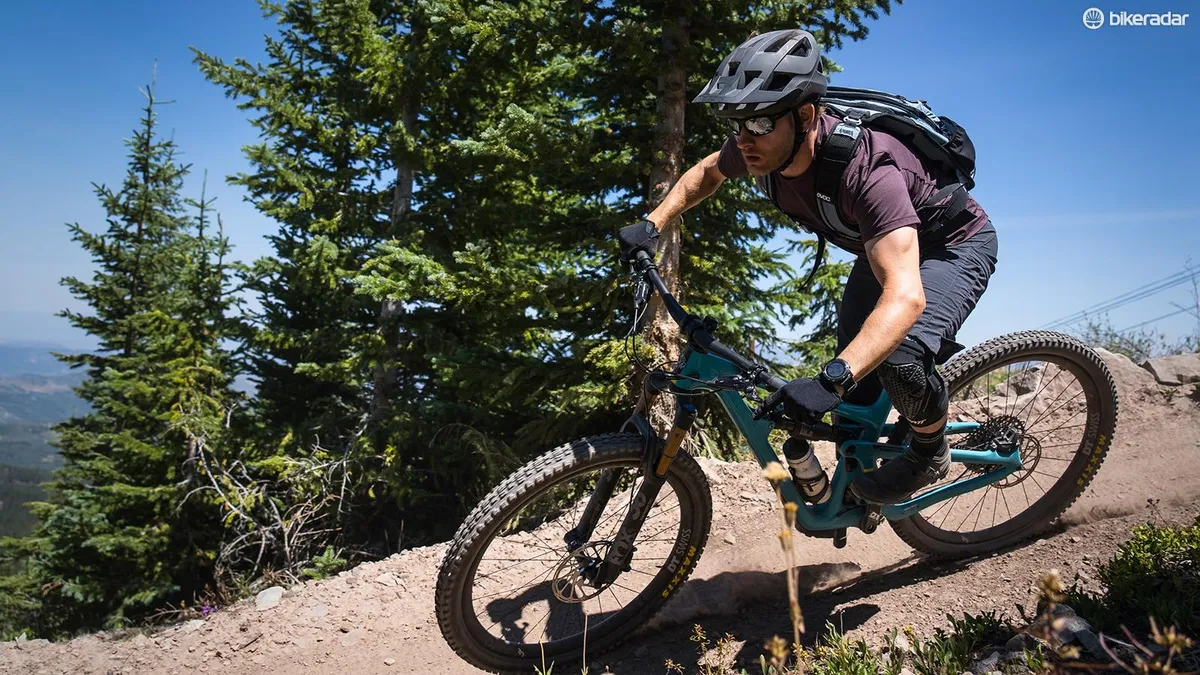
It’s the updated kinematics of the Switch Infinity suspension that I came to appreciate most. Despite being a lightweight rider, I frequently add volume reducers for additional end-of-stroke support. No so with the SB150; the increase in progression is enough to smother square-edge impacts without feeling harsh.
Improved downhill performance may have been a given, but I didn’t expect the SB150 to surpass its predecessor on the climbs.
The steeper seat tube angle places the rider in a much better climbing position. Tight switchbacks that required a conscious effort to swing the SB5.5’s front end through were handled with much less body English on the SB150.
With the climb switch on the Fox Float X2 engaged, the SB150 can scurry up any steep technical climb without wasting too much energy.
I found the stock SRAM XO1 Eagle Race kit to be well sorted with a few minor exceptions — many riders are swapping 175mm cranks for shorter 170 and sometimes 165mm crank arms and manufacturers are starting to follow suit. I would have preferred to spin 170mm cranks not just to avoid impacts on descents, but also to make navigating rocky climbs easier.
The Code RSC brakes offer improved performance over the trail-rated Guides. Having a 200mm front rotor was also appreciated.
Yeti offers the carbon DT Swiss XMC 1200 Spline 30 has an upgrade option. In my experience, it’s a light, responsive and durable wheelset worth the investment.
The Fox 36 GRIP 2 fork and Float X2 shock are category leaders with wide ranges of adjustment. Take the time to bracket your settings and you will be rewarded with excellent performance.
Stock rubber includes a 29x2.5in Maxxis DHF at the front and a 29x2.3in Maxxis Aggressor at the rear. Both are outstanding tires, though I would have preferred a matching 2.5 Aggressor out back, as I find it grips a bit longer through turns before letting go.
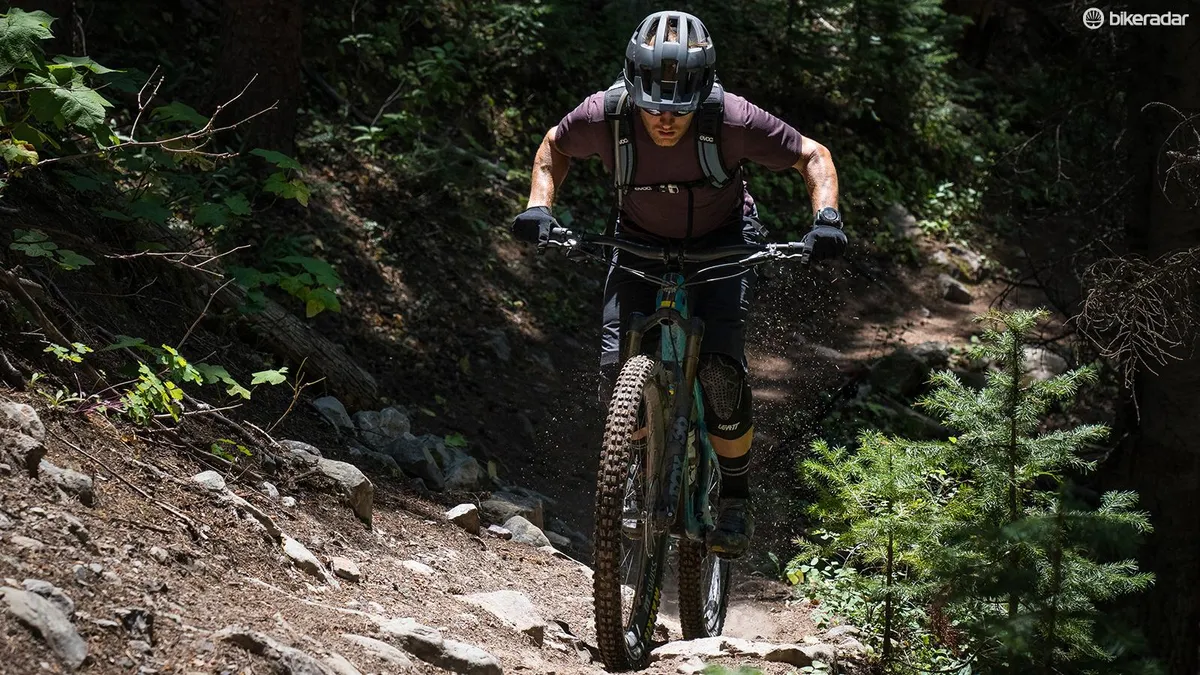
Verdict
Long-travel 29ers have become the go-to weapon among professional and amateur enduro racers. The SB150 puts Yeti back in the fray in this increasingly competitive category.
The SB150’s geometry and suspension performance make it an excellent choice for riders looking for an enduro-ready machine that won’t feel cumbersome on all-day epics.
That said, the SB150 comes with a price tag ($9,499, international pricing TBA) that is substantially higher than the majority of its competitors. This makes it a tough sell for budget-minded riders, who may be better off pocketing the difference and putting it toward upgrades, race entries, or the next mountain bike vacation.
Still, die-hard Yeti fans and riders without sticker shock will line up to join the tribe aboard the SB150.
